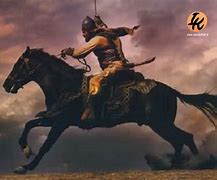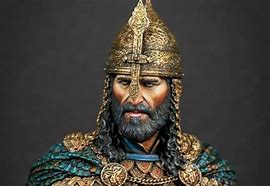Sultan Salahudin Ayoubi History
5 min readRuler Salahuddin Ayyubi, regularly known as Saladin, was an eminent Muslim military pioneer and legislator during the middle age time frame. He was brought into the world in 1137 in Tikrit, present-day Iraq, and rose to unmistakable quality during the twelfth 100 years with regards to the Campaigns, a progression of strictly persuaded military missions between Christians from Western Europe and Muslims in the Center East.

Early History
Saladin came to unmistakable quality as the king of Egypt and Syria, administering from 1174 until his passing in 1193. His most huge accomplishment was the recovery of Jerusalem from the Crusaders in 1187, a triumph that has become one of the pivotal occasions of his life. This occasion is otherwise called the Clash of Hattin, where Saladin’s powers conclusively crushed the Crusader armed force drove by Ruler Fellow of Jerusalem. Subsequently, he figured out how to deal with numerous Crusader-held domains in the Levant. In spite of this tactical achievement, Saladin was known for his gallant way of behaving, and he permitted safe section for the vast majority Christian regular citizens to leave the city after the catch of Jerusalem. This procured him appreciation even from his Christian enemies.
Saladin’s endeavors were not exclusively centered around military missions. He was a gifted negotiator and executive, joining different Muslim groups under his initiative, in this way laying out the Ayyubid line. His standard was portrayed by major areas of strength for an of equity, strict resistance, and a standing for decency among his subjects and unfamiliar pioneers the same.

The European Christian states, including the heads of the Third Campaign, perceived Saladin’s tactical ability and discretionary abilities. One of his most well-known rivals was Richard the Lionheart, the Lord of Britain, with whom Saladin had a few experiences during the Third Campaign (1189-1192). In spite of their contention on the combat zone, Saladin and Richard fostered a shared regard for one another.
Saladin died in 1193 at 55 years old. His demise denoted the start of the downfall of the Ayyubid tradition, which at last prompted unseen struggles and the deficiency of a portion of the domains he had joined together Saladin’s inheritance as a fair and noteworthy pioneer perseveres right up to the present day. He is broadly view as a legend in the Islamic world and an illustration of valor throughout the entire existence of fighting. His personality has been praise in different artistic works, and his name keeps on summoning appreciation and esteem in the Bedouin world and then some.
Skirmish of Hattin (1187):
Perhaps of the most crucial point in time in Saladin’s tactical vocation was the Skirmish of Hattin, battled on July 4, 1187. The Crusader armed force, drove by Ruler Fellow of Jerusalem, was conclusively crush by Saladin’s powers. The fight brought about the catch of a critical piece of the Crusader initiative, including Ruler Fellow, Raymond III of Tripoli, and a few different aristocrats. With this triumph, Saladin oversaw an enormous piece of the Crusader states, and it made ready for the possible recover of Jerusalem.

Attack of Jerusalem (1187):
Following the triumph at the Clash of Hattin, Saladin laid attack to Jerusalem. The city gave up to him on October 2, 1187. Notwithstanding his tactical achievement, Saladin showed valor and permitted safe section for the Christian regular citizens to leave the city safe, which procured him reverence even from his adversaries.
The Third Campaign (1189-1192):
After the fall of Jerusalem, Christian Europe was frightened, and the Third Campaign was sendoff accordingly. European rulers, including Richard the Lionheart (Lord of Britain), Philip II (Ruler of France), and Sovereign Frederick I (Heavenly Roman Head), partook in this Campaign. Saladin confronted huge difficulties against the consolidated powers of the Crusaders, and his authority abilities were trying in a few significant fights.

Fights with Richard the Lionheart:
Saladin’s generally renowned adversary during the Third Campaign was Richard the Lionheart. The two chiefs conflicted in a few fights, including the Skirmish of Arsuf (1191), where Saladin’s powers were crush, and the Clash of Jaffa (1192), which finished in an impasse. Regardless of being foes on the combat zone, the two chiefs fostered a common regard for one another’s tactical capacities.
The Deal of Jaffa (1192):
After the Clash of Jaffa, Saladin and Richard the Lionheart arranged a détente as the Deal of Jaffa. As indicated by the deal, Jerusalem stayed under Muslim control. While Christian explorers were allowing admittance to the city and the sacred locales. The deal denoted the finish of the Third Campaign and guaranteed a somewhat steady period in the locale.
His Improvement
Saladin’s military and key accomplishments were without a doubt huge, and his standard achieved remarkable enhancements in different perspectives:
Unification and Dependability:
Saladin was effective in binding together assorted Muslim groups under the Ayyubid standard. His capacity to unite different gatherings and clans reinforced the political security of the district. This solidarity was significant in opposing the Crusader states and protecting against outside dangers.
Military Changes:
Saladin carried out a few military changes, working on the viability and discipline of his armed forces. He presented new strategies and procedures that demonstrated effective in fights. His powers were profoundly preparing and restrain, and he stressed the significance of solidarity and participation among his warriors.

Resistance and Decency:
Saladin’s standard was portray by strict resilience and reasonableness towards various networks. Notwithstanding being a dedicated Muslim, he permitted Christians and Jews to rehearse their confidence uninhibitedly and regarded their places of love. This standing for simply rule and charitableness acquired him appreciation among Muslims as well as among his Christian enemies.
Reproduction and Advancement:
In the wake of catching Jerusalem, Saladin zeroed in on modifying and working on the city’s foundation. He fixed harmed structures and strict locales, ensuring that Jerusalem stayed a critical strict and social community for Muslims. He additionally put resources into different urban communities subject to his authority, advancing monetary development and improvement.
Strategy and Ceasefire:
Saladin was not exclusively center around military victories. His conciliatory abilities were obvious in arranging ceasefires and deals with his foes. Most eminently the Settlement of Jaffa with Richard the Lionheart. These arrangements considered times of harmony and solidness, decreasing the power of contention in the district.
Empowering Learning and Information:
Saladin was a supporter of expressions, culture, and instruction. He upheld researchers and empowered the interpretation of different texts from various dialects into Arabic. His court turned into a focal point of scholarly movement, advancing information and scholastic trade.
Water Preservation and Public Works:
Saladin perceived the significance of water protection in the dry districts he dominated. He started undertakings to construct wells, repositories. And water system frameworks to guarantee the accessibility of water for both the military and regular citizen populaces.

In addition, Saladin’s standard denoted a time of relative success, dependability, and resistance in the domains he represented. His tactical triumphs and diplomacy left an enduring effect on the locale’s set of experiences and procured him. A standing as an image of gallantry and righteous administration in both Muslim and non-Muslim sources. His heritage keeps on being commended and regarded in the current day.





